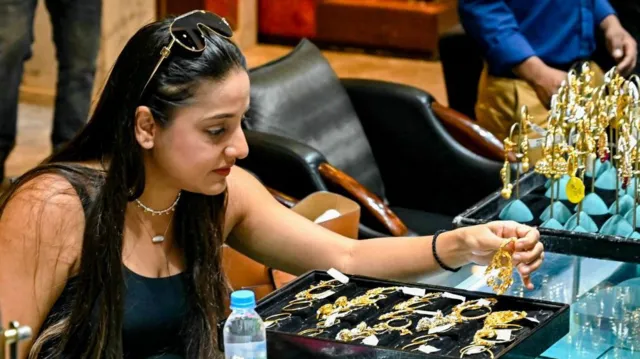Billion Indians have no spending money


India is home to 1.4 billion people but around a billion lack money to spend on any discretionary goods or services, a new report estimates.
The country’s consuming class, effectively the potential market for start-ups or business owners, is only about as big as Mexico, 130-140 million people, according to the report from Blume Ventures, a venture capital firm.
Another 300 million are “emerging” or “aspirant” consumers but they are reluctant spenders who have only just begun to open their purse strings, as click-of-a-button digital payments make it easy to transact.
What is more, the consuming class in Asia’s third largest economy is not “widening” as much as it is “deepening”, according to the report. That basically means India’s wealthy population is not really growing in numbers, even though those who are already rich are getting even wealthier.
All of this is shaping the country’s consumer market in distinct ways, particularly accelerating the trend of “premiumisation” where brands drive growth by doubling down on expensive, upgraded products catering to the wealthy, rather than focusing on mass-market offerings.
This is evident in zooming sales of ultra-luxury gated housing and premium phones, even as their lower-end variants struggle. Affordable homes now constitute just 18% of India’s overall market compared with 40% five years ago. Branded goods are also capturing a bigger share of the market. And the “experience economy” is booming, with expensive tickets for concerts by international artists like Coldplay and Ed Sheeran selling like hot cakes.
Why global stars like Coldplay and Ed Sheeran are hitting India
Companies that have adapted to these shifts have thrived, Sajith Pai, one of the report’s authors, told the BBC. “Those who are too focused at the mass end or have a product mix that doesn’t have exposure to the premium end have lost market share.”
The report’s findings bolster the long-held view that India’s post-pandemic recovery has been K-shaped – where the rich have got richer, while the poor have lost purchasing power.
In fact, this has been a long-term structural trend that began even before the pandemic. India has been getting increasingly more unequal, with the top 10% of Indians now holding 57.7% of national income compared with 34% in 1990. The bottom half have seen their share of national income fall from 22.2% to 15%.
routine work. “The number of supervisors employed in manufacturing units [as a percentage of all employed] in India has gone down significantly,” it adds.
The government’s recent economic survey has flagged these concerns as well.
It says labour displacement as a result of these technological advancements is of particular concern for a mainly services-driven economy like India, where a significant share of the IT workforce is employed in low value-added services sectors that are most prone to disruption.
“India is also a consumption-based economy, thus the fall in consumption that can result from the displacement of its workforce is bound to have macroeconomic implications. If the worst-case projections materialise, this could have the potential to set the country’s economic growth trajectory off course,” the survey says.




